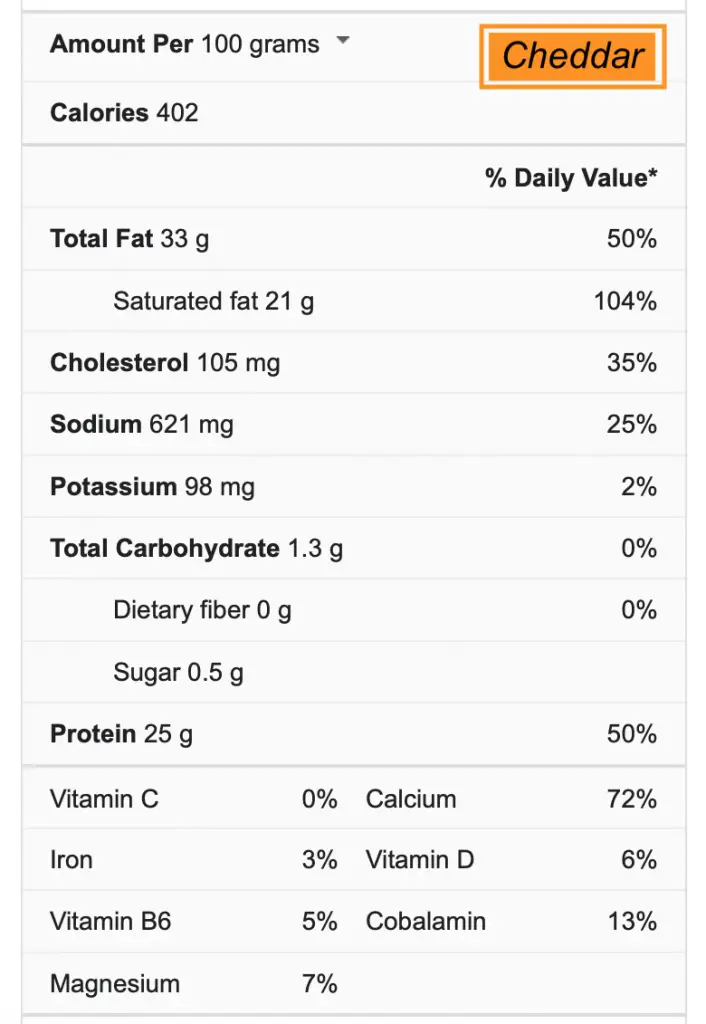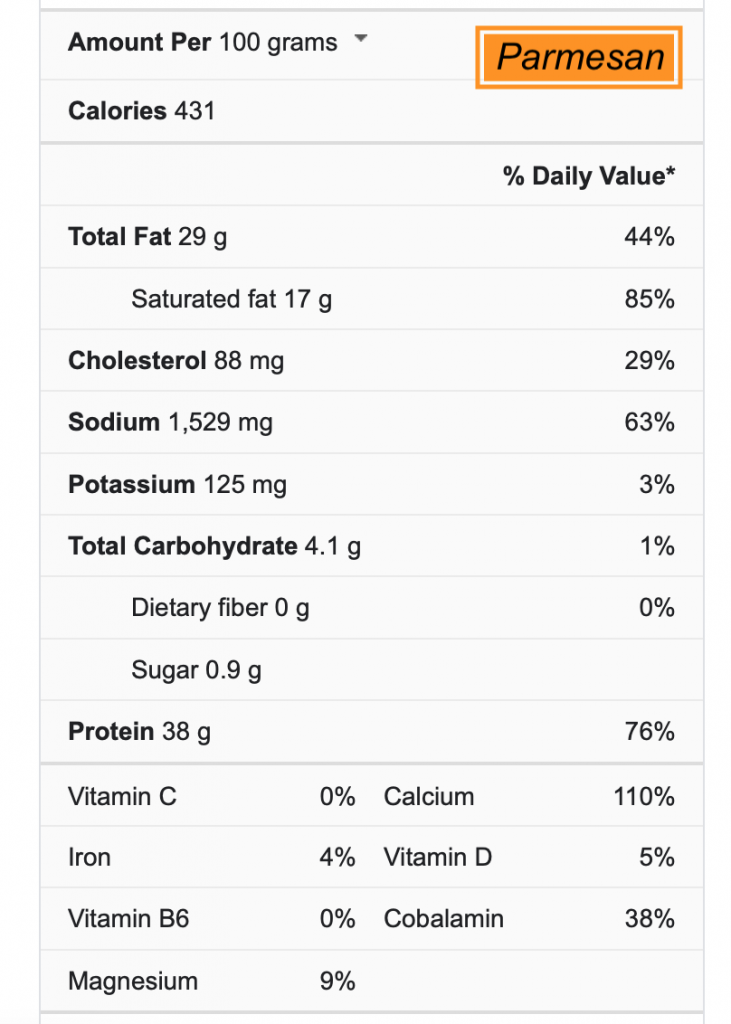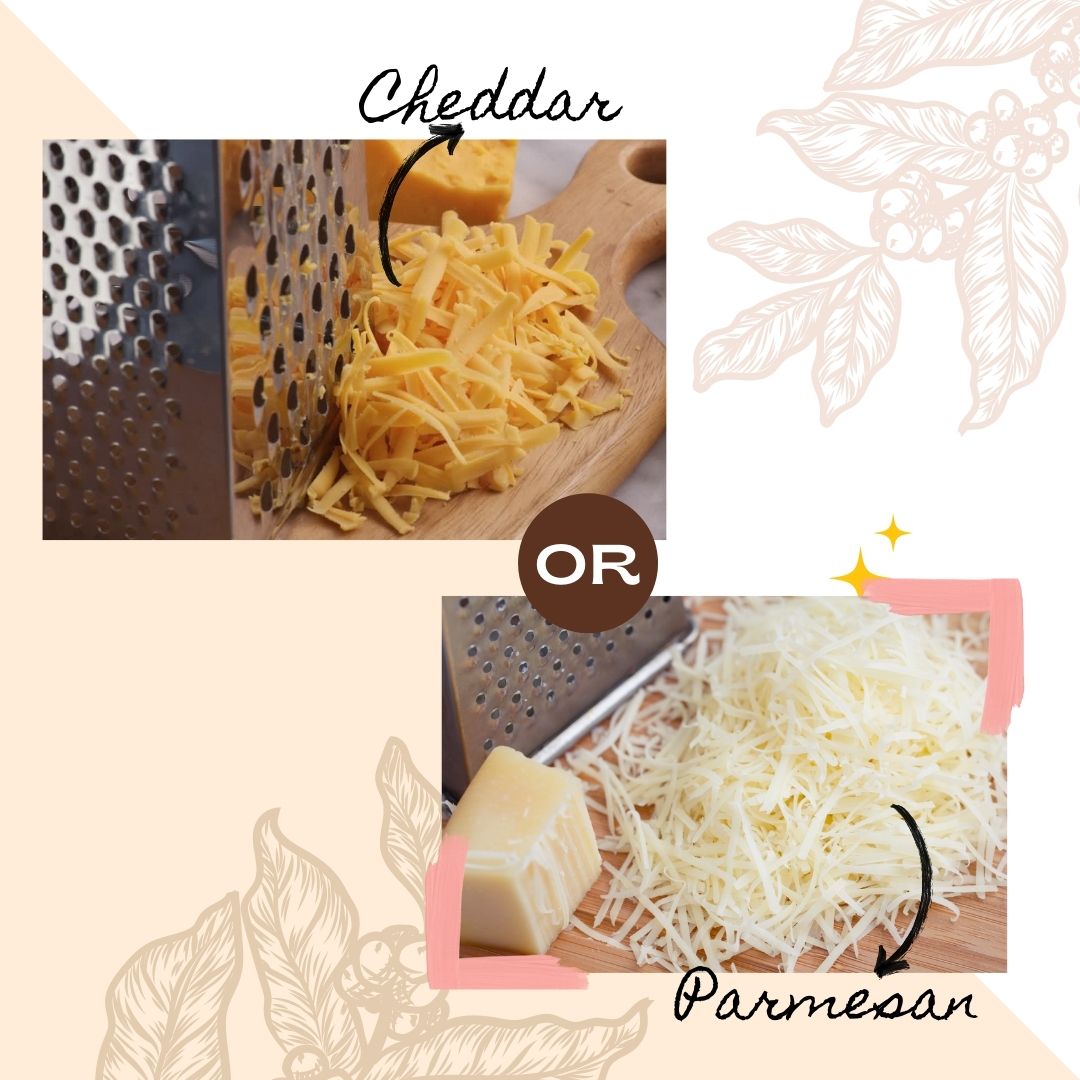Last Updated on September 26, 2023 by Aaron
Many people lump Cheddar and Parmesan together as just “cheese.” But anyone who’s had both can tell you they’re far from the same.
Let’s dive in and see what sets these two cheese worlds apart.
Table of Contents
Origin
The story of Cheddar cheese starts in the village of Cheddar in Somerset, England. Its origins trace back over a thousand years, with records from the 12th century discussing the cheese. Though its roots are distinctly English, Cheddar’s popularity has resulted in its production in numerous countries, including the U.S., Canada, and Australia. Consequently, depending on where it’s made, the taste and production methods can vary.
Parmesan, when referred to as “Parmigiano-Reggiano,” is a specific cheese that has a designated origin from Italy. It is a product of the Parma, Reggio Emilia, Modena, and certain areas of the provinces of Mantua and Bologna. The region and traditional methods of production play a significant role in the flavor and quality of Parmesan.
The Key Differences
Young Cheddar has a relatively smooth and creamy texture. As it ages, it becomes crumbly and can even develop crunchy crystals, especially in aged artisanal varieties. The texture variations are largely due to the length of the aging process and moisture content.
Parmesan is recognized for its hard, grainy texture. This graininess comes from the long aging process which causes protein crystals to form. These crystals give a delightful crunch and are a sign of a well-aged cheese.
For flavor, cheddar’s flavor spectrum is vast. A young Cheddar might have a creamy and mild taste, but as it ages, the flavor becomes tangier, richer, and more complex. Sometimes, aged Cheddar has a slightly earthy note, and its sharpness can linger on the palate. Parmesan offers a deep, nutty flavor with slight fruity undertones. The aging process allows it to develop these strong and savory notes. It’s also known for its salty kick, which enhances the dishes it’s added to.
Cheddar cheese can range in color from natural white to a deep orange. The orange hue, prevalent especially in American Cheddars, is not a result of aging but comes from the addition of annatto, a natural dye.
Parmesan typically has a pale straw-yellow color, which is consistent throughout its body. This color can slightly vary depending on the diet of the cows and the aging process but remains fairly consistent among authentic Parmigiano-Reggiano cheeses.
Production
Made from cow’s milk, Cheddar cheese undergoes a unique process called “cheddaring” where the curd is cut, heated, and then pressed into large cylindrical molds. After this, it is aged, sometimes for several years, to develop its flavor. The aging duration heavily influences the cheese’s final texture and taste. Read how cheddar is made here.
The production of Parmesan also starts with cow’s milk, but it undergoes a cooking process. After this, it is shaped into large wheels and then left to age. The maturation process for Parmesan is quite extensive, often taking anywhere from 12 to 36 months or even longer, resulting in its distinct texture and taste. Read step-by-step on parmesan making.
Using Cheddar Instead of Parmesan?
Generally, they are not directly interchangeable because of their distinct flavors and textures.
While Cheddar and Parmesan are both cheeses, their unique flavor profiles make them suited for different dishes. In recipes where the specific type of cheese is crucial for the desired flavor outcome, it’s best not to interchange them. However, in some recipes where the cheese’s role is less about its specific flavor and more about its general characteristics (like cheesiness, meltiness, or saltiness), you might be able to swap one for the other.
Cheddar’s melting qualities make it a staple in many dishes. It is also known for its varying degrees of sharpness and often carries a creamy texture, making it the star in dishes like macaroni and cheese, grilled cheese sandwiches, and cheeseburgers. It’s versatile, and its varying ages allow for different culinary applications, from garnishes to the main ingredient.
Its pronounced taste might not always fit well in traditional Italian recipes where subtler flavors prevail.
Parmesan, with its granular texture and rich, nutty profile, shines in classic Italian dishes, enhancing the tastes of tomatoes, basil, and olive oil in recipes like pasta or pizza. It is commonly grated over pasta dishes, giving them a boost of umami flavor. Parmesan’s hard texture makes it ideal for grating or shaving over salads, risottos, and even soups. Beyond that, chunks of aged Parmesan can be enjoyed as a snack or appetizer, paired with fruits or wine.
Parmesan is a staple in Italian cuisine, while Cheddar is versatile and can be a stand-in for cheeses that offer a sharp or pronounced flavor, such as Monterey Jack, Colby, or Pepperjack.
Nutrition: Which is Healthier?


When it comes to calories, Parmesan usually takes the edge, having fewer per ounce than Cheddar. This is partially because it’s often used grated, allowing a small amount to deliver its robust flavor, possibly leading to lesser consumption. In terms of fat, Cheddar typically stands out with a higher content per ounce, though the types of fats in both cheeses can vary, comprising both saturated and unsaturated kinds.
Interestingly, while Cheddar is more calorie-dense in fats, Parmesan is generally saltier. The extended aging process of Parmesan often results in higher sodium content, which is something for sodium-conscious individuals to bear in mind. On the protein front, Parmesan usually has a slight advantage, offering a bit more protein per ounce compared to Cheddar. Calcium, vital for bone health, is present in both cheeses, but Parmesan often nudges ahead with a higher concentration.
For those counting carbs, both cheeses come as good news, with generally low carbohydrate profiles. A notable mention is that aged cheeses like Parmesan have a reduced lactose content due to their prolonged fermentation. This characteristic might make Parmesan more digestible for those who are lactose intolerant or sensitive.
Lastly, both cheeses come packed with essential micronutrients, from vitamin A and B vitamins to phosphorus and zinc, though the specific amounts can vary based on multiple factors like cow diet and production methods.
Whether Cheddar or Parmesan comes out as “healthier” really depends on your needs.
And then, Pricing?
In the U.S., Cheddar has a price that can swing based on its age, brand, and whether it’s imported or domestic. Typically, mild or medium Cheddar might set you back anywhere from $4 to $8 per pound. However, for the aged or specialty Cheddars, especially those imported or sourced from celebrated dairies, you could be looking at a price tag ranging from $15 to $25 per pound or even more.
Now for Parmesan, the price nuances are even more distinct. A significant determinant is whether you’re eyeing genuine Parmigiano-Reggiano straight from Italy or a U.S.-produced counterpart.
Domestic versions often hover in the ballpark of $5 to $12 per pound. In contrast, the authentic Parmigiano-Reggiano, boasting a PDO protection and adhering to strict Italian production standards, carries a heftier price, commonly between $15 to $30 per pound. And for those exceptionally aged selections, the cost might climb even higher.
Interestingly, due to Parmesan’s potent flavor and typical use as a garnish, it’s often sold in smaller quantities, like dainty wedges or pre-grated packs, whereas Cheddar is frequently bought in more substantial blocks or slices.
Read related in Parmesan Why So Expensive

